Leki Makalu Lite
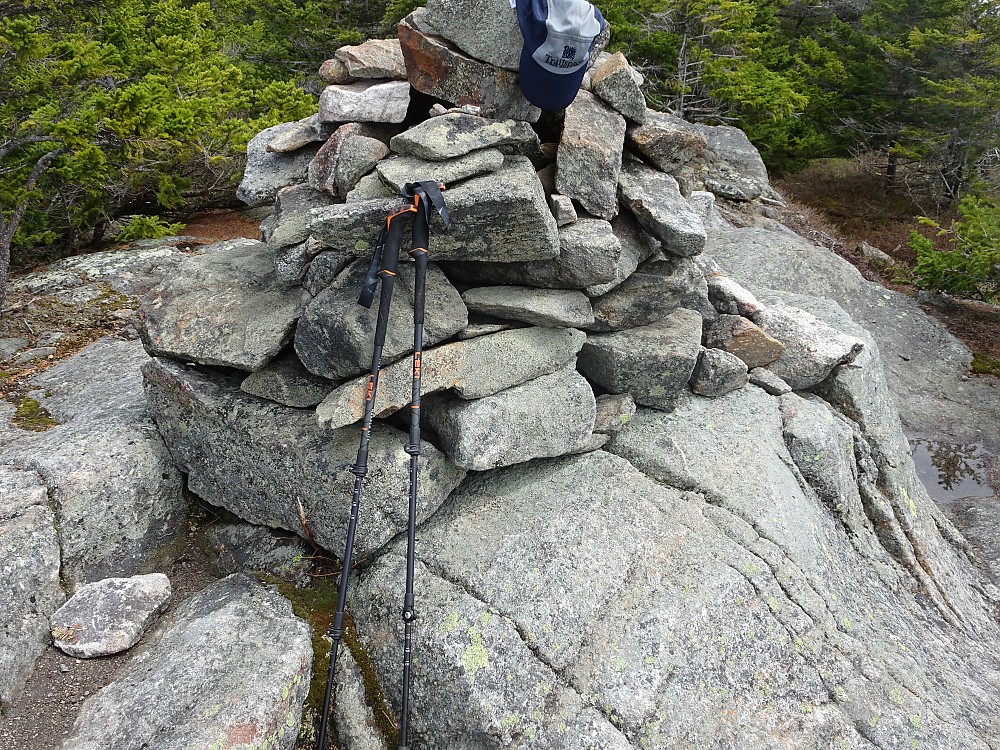
Leki's Makula Lite three-piece collapsible, rigid aluminum trekking poles are updated from previous models with rubberized Aergon Air Thermo grips. With the secure Speed Lock Plus flick locks and ergonomically shaped grips they are ready for rugged trail.
Pros
- Easy to adjust on trail
- Solid support with just a little flex
- Nice grip shape with T top
- Mostly good wrist strap
Cons
- Minor issue with strap material

With apologies to the nice folks at Leki for the long wait, here is the review I owe them for what have become my favorite hiking poles.
When the chance to test Leki's Makalu Lite trekking poles came up a few years ago I realized that I had never used any Leki poles before. Santa had just brought me a new set of poles, but I figured I could work these into my hikes enough to write a review. Once I started using them I kept using them and used them and used them and used them. A couple thousand miles later, here we are. Sorry for the wait.
Specs:
- Weight 250g/8.8oz per pole
- Length Packed 67cm/26.4"
- Length Use 100 - 135 cm/39.4 - 53.1"
- Shaft Diameters 16/14/12mm
Materials:
- Pole Shafts: HTS 6.5 Aluminum
- Grip: Rubber
- Strap: Leki Strap Skin (Not grosgrain)
Adjustability & Locking:
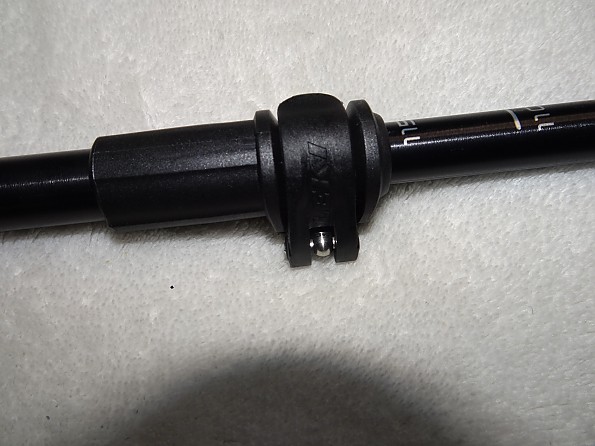
The Makalu Lite, three-section poles, have Leki's Speed Lock Plus system to allow for easy adjustment. The flick locks are easy to open, but well designed to stay locked on trail. The shape of the lever and the way it is protected above and below prevent grass or other materials from getting caught.
Leki uses a double adjustment system with markings at 5cm intervals from 100-135cm at both joints. This allows you to only extend the pole as needed rather than fully extending one joint which I believe is more stable.
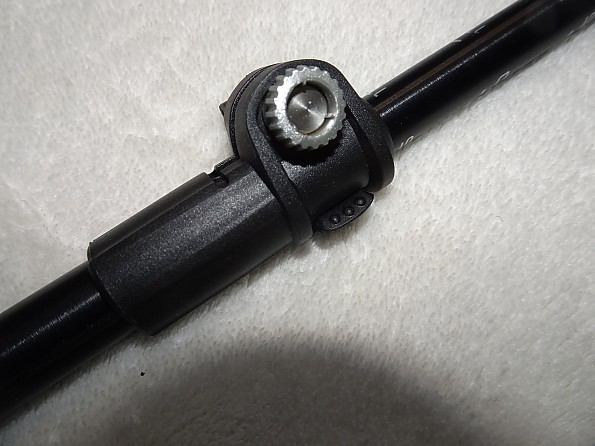
No tool is needed to adjust lever pressure as Leki uses a thumbscrew. Very easy and fast to add or reduce the lever tension if desired.
Straps & Grips:
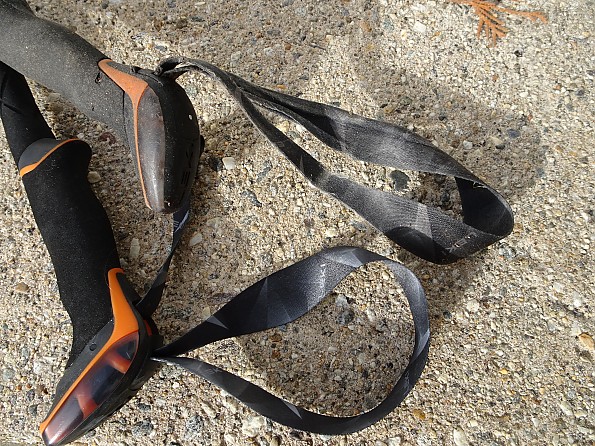
I am not sure what the Leki Strap Skin is made of, but it definitely is different from the grosgrain most poles come with. It is soft, supple and doesn't retain a lot of moisture when exposed to sweat or rain. It feels good to the skin and doesn't seem to create as much friction as most straps. It took a little while to get used to and I wasn't sure I liked it at first, but eventually I found using other straps annoying. The smooth material doesn't annoy my hands as much as grosgrain on longer hikes.
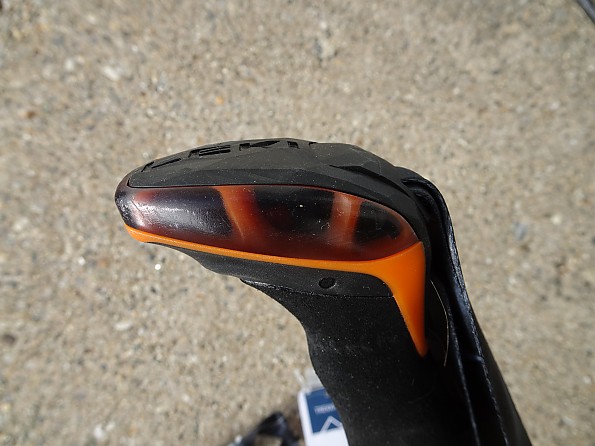
The grips on the Makalu Lite poles are rubberized and use Leki's Aergon Air tech which is intended to keep grips cooler, reducing hand sweat and increasing grip. The top of the grips have a great ergonomic shape that lets you apply full weight without hurting the hands which is great for when you have to lower yourself down cliff type trails.
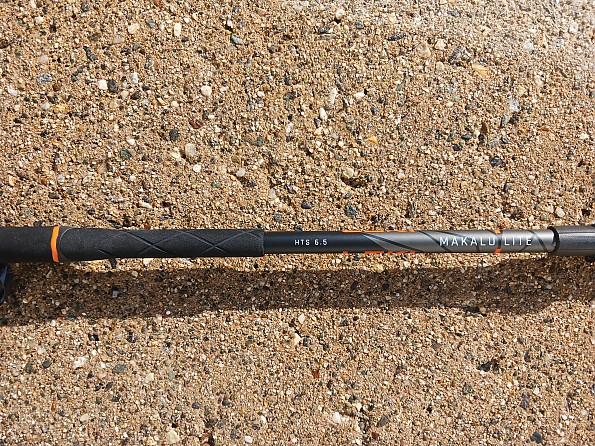
The rubberized grip material extends down the top pole section for about 5". This gives you the ability to deal with steep terrain or traversing on the fly.
Flex & Traction:
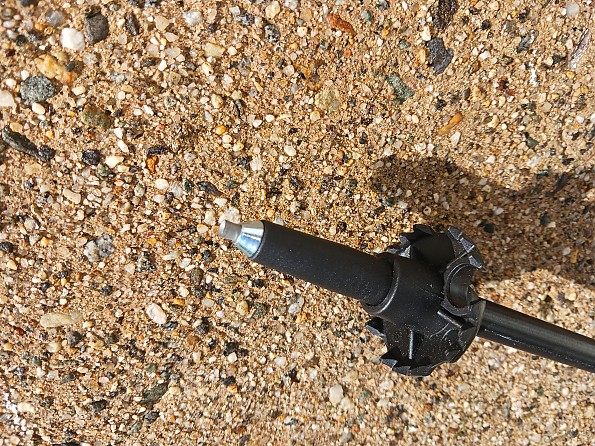
The HTS 6.5 Aluminum poles have a bit of flex in the middle and lower sections while being relatively stiff in the top section. That flex isn't noticed on trail, but is certainly visible if I bend the pole over my knee. The Flex Tips are designed to also give a little to increase traction by letting the carbide spike meet rock surfaces with maximum contact.
On trail this translates into great traction in most all conditions. Wet rocks, icy snow, muddy or flooded trail were all the same as dry for the most part. The Makalu Lites tended to stay where I put them.
Baskets:
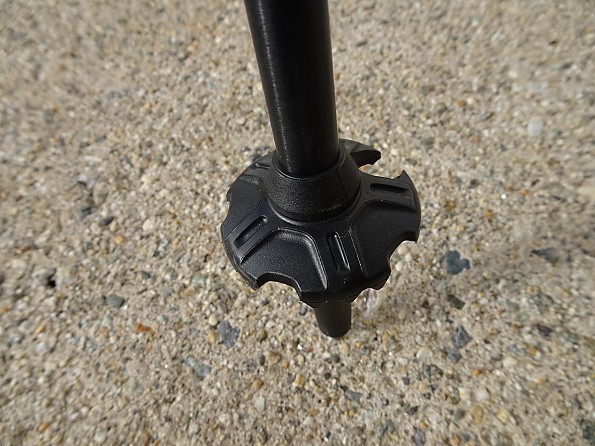
These poles are designed for trekking and so are the baskets Leki put on them. Small, functional mud baskets is how I would describe them. Perfect for keeping you from sinking into shallow mud too easily, but they do almost nothing in deep powder. Being less than 2" in diameter they do not get in the way when navigating rocks or vegetation.
Construction & Durability:
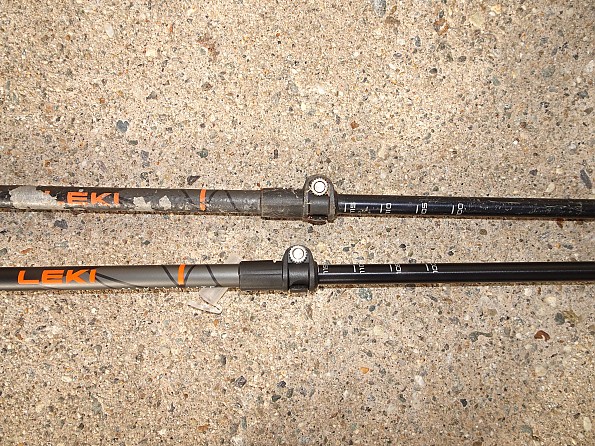
The Makalu Lite trekking poles feel light and perhaps not very sturdy on first picking them up. Having put a couple thousand miles on the first set I can vouch for their sturdiness despite being light. The HTS 6.5 Aluminum was put to the test as those miles were New England miles full of rocky trails and slabby ridges.

The poles were fully functional right up until I noticed that I had worn one of the tips off. Leki sells replacement tips, but I found a good deal on a new pair of poles so opted to go that route instead. They also have replacement straps available, though other than fading they don't appear to have worn at all. These are well made poles up to the sort of trouble I get into.
Sustainability:

As I mentioned, Leki offers replacement parts for purchase so folks wanting to avoid throwing away a pole after wearing them out can replace parts as needed.
Also of note was the limited waste that came along with the new poles. There was no backing carboard. Just a small plastic loop holding the hang tag. Leki included small protective caps for travel, but thankfully didn't send out rubber walking tips to be lost the first time they were used heh.
Testing Conditions:

As mentioned, I put a couple thousand miles on these poles. It is the sort of miles that really matter though. Along with many shorter trips, day hikes, snowshoeing and training on the water tower hill, the Makalu Lites came along with me on the '22 Long Trail SOBO hike and the 600 mile Longhos Loop I did in '23. Combining AT, Long Trail, 5 days of road walk and the mighty Cohos Trail, that loop was a serious test of pretty much everything, but definitely the hiking poles. It rained 45 out of 57 days so everything was wet and slimy even on the good days. The storms gouged huge areas of trail leaving them devastated making for some very challenging terrain at times. I think it was the road walking on Day 52 that finally did in that tip, but I finished the last couple days on the plastic nub heh. I feel confident saying these poles were tested!
Conclusions:
I knew I really liked using the Makalu Lites when I was using them, but it was not using them last year that really made me realize just how much I liked them. There was a little getting used to the wrist straps which were much more soft and flexible than the grosgrain I was familiar with. Usually straps become stiff and hold the shape they are used in. That can be uncomfortable at times, but allows them to be used in a certain way. The flexibility of the Strap Skin sometimes made it harder to get my hand through the loop and also allowed the strap to flip over on the back of my hand in an annoying way. Eventually I accepted that occasional annoyance as a good trade for comfort the rest of the time.
On trail they did what I need poles to do. They stuck where I put them most of the time. When I needed them to save my butt they didn't fail to support me and my pack load's weight. There was a point ascending Moosilauke SOBO on the AT section of last year's Longhos Loop that illustrates this point well. The trail climbs next to a cascading waterfall for quite a while. The rocks under foot are constantly wet so the terrain is quite treacherous. There are a series of wooden blocks nailed into the slope by rebar that act as steps in some spots. For the rest you are on your own.
I found myself slipping off a wet, slanted boulder and instinctively planted my downhill, right, pole to catch myself. Thankfully the pole and my arm held, because my slipping boot was about to fall into a hole that was deeper than my leg was long. That night I awoke to realize I had sprained my wrist making that save as it started squawking on the shelter floorboards. That is how hard I came crashing down on that pole. There was a tremendous amount of force applied to that planted pole with well over 200lbs of weight falling on it. The pole remained a pole and the locks remained locked. There were many such saves on that trip and others along the way. That is one of the many reasons I use hiking poles so having one I can trust is vital.
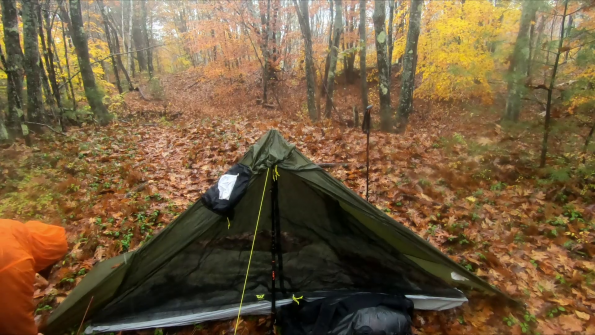
As I mentioned, last year I hiked with other poles; the Komperdell Adventure Powerlock Foam Compact which I reviewed previously. They are good, solid poles. Nothing in particular I can say is wrong with them, but my hands and arms seemed to remember they had known something better. Getting the new pair of Makalu Lites in the mail recently there was a happy familiarity when I picked them up and I am looking forward to using them in the coming year.
There are fancier poles out there using carbon fiber and such, but for the sort of hiking I do, good strong aluminum is my weapon on choice. So far, of the many brands and styles I have tried, the Makalu Lites are my favorite so I have no problem recommending them to others.
Background
I used these poles for a couple thousand miles, wore them out and bought another set. Been using poles for many years and many many thousands of miles. I identify as a quadruped on trail.
Source: received for testing via the Trailspace Review Corps
(Sample for testing and review provided by Leki)
Your Review
Where to Buy
You May Like
The Makalu Lite replaced the Leki Makalu Classic COR-TEC.
Specs
| Price |
MSRP: $139.95 Current Retail: $139.95 Historic Range: $94.73-$139.95 |
| Construction |
Adjustable|3-section |
| Grip |
Aergon Air Thermo |
| Strap |
Lock Security Strap Skin 4.0 |
| Segments |
3-pieces |
| Shaft Diameter |
16|14|12 mm |
| Upper section |
Aluminum (HTS 6.5) |
| Lower section |
Aluminum (HTS 6.5) |
| Locking System |
Speed Lock plus |
| Basket |
Trekking 2.0 |
| Tip |
Carbide Flex Tip |
| Length/Size |
100 - 135 cm |
| Weight/Pole |
250 g/per pole |
| Pack Size |
67 cm |

